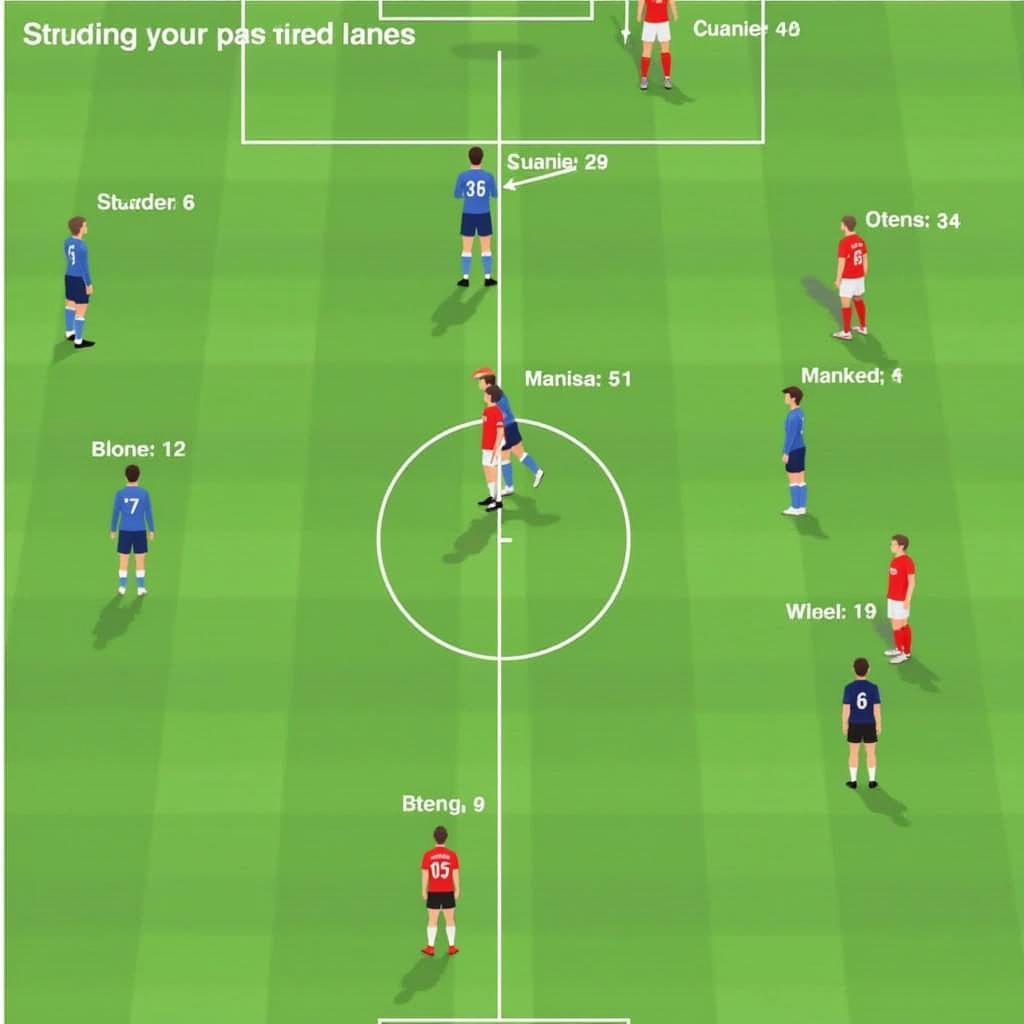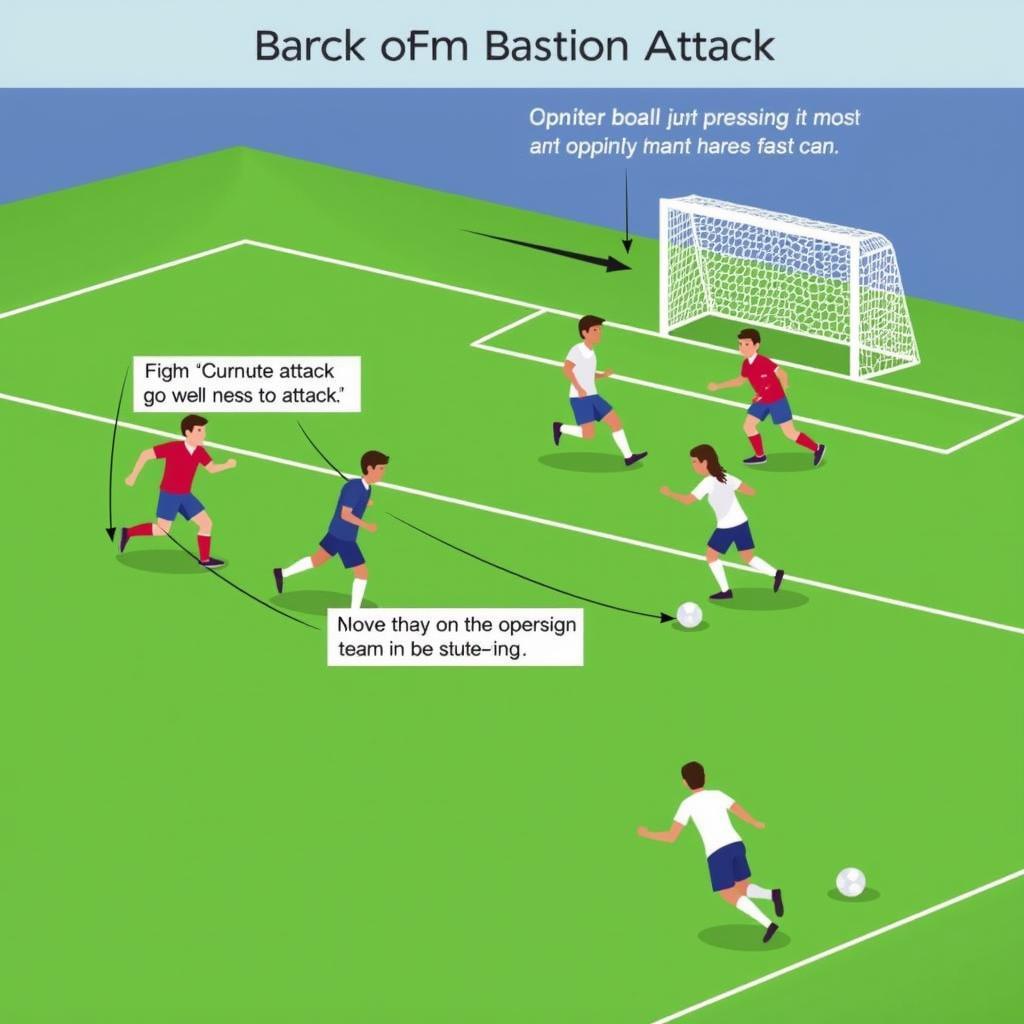Many Players Don’t Press: Tactical Approaches and Player Roles
November 1, 2024Many players don’t press aggressively, and this can be a deliberate tactical choice rather than a lack of effort. Understanding why some players are instructed to hold back their press can offer valuable insights into the complexities of modern football. This article delves into the strategic reasons behind a less intense pressing style, the roles specific players adopt in such systems, and how this approach can be just as effective as all-out pressing.
Why Don’t All Players Press High?
While high-pressing systems have gained popularity, they are not universally applicable. Several factors influence a team’s decision to adopt a more conservative pressing approach. Sometimes, it’s about conserving energy for key moments, particularly against possession-dominant opponents. Other times, it’s about luring the opposition into a trap, allowing them to advance the ball before springing a more targeted press. Team shape and personnel also play crucial roles. A team might lack the players with the necessary stamina or tactical awareness to execute a high press effectively. Finally, a team’s overall game plan may prioritize defensive solidity over aggressive ball recovery. They might focus on maintaining a compact shape and blocking passing lanes, inviting the opponent to play predictable passes before stepping in to intercept. You might see this more from teams playing against opponents like cầu thủ roberto firmino, known for their clever movement and passing in tight spaces.
 Players Holding Back Press
Players Holding Back Press
The Importance of Defensive Shape and Player Roles
In systems where not all players press high, maintaining a well-organized defensive shape is paramount. This requires discipline and clear roles for each player. Some players, often deeper-lying midfielders or defenders, will be tasked with screening the defense and protecting central areas. Others might be assigned to mark specific opposition players or cut off passing lanes. This coordinated approach can be just as effective as a high press, forcing the opposition into wide areas or predictable passes that can be easily intercepted.
The Anchor Man: Protecting the Backline
The anchor man, typically a defensive midfielder, plays a vital role in low-pressing systems. Their primary responsibility is to shield the back four, intercepting passes and breaking up attacks before they reach the penalty area. This player requires excellent positional awareness, tackling ability, and reading of the game. They act as the bedrock of the defense, providing stability and allowing other players to focus on their specific roles.
Wide Midfielders: Balancing Defense and Attack
Wide midfielders in these systems face a unique challenge. They must be prepared to track back and support the defense when the opposition attacks down the flanks, but they also need to be ready to contribute to the attack when their team has possession. This demands a high level of fitness, tactical understanding, and versatility. They might need to adjust their positioning based on the opponent’s formation and attacking strategy, sometimes pressing higher and other times dropping deeper to maintain the defensive structure. This role highlights the adaptability required in modern football, especially against teams with fluid attacking movements, similar to how tên các cầu thủ ghép lại thành tên của messi orchestrates attacks.
When Less is More: Exploiting the Counter-Attack
A low-pressing strategy can create excellent opportunities for counter-attacks. By allowing the opposition to advance, a team can lure them into a false sense of security before quickly transitioning into attack. This requires speed, precision, and clinical finishing. Teams employing this tactic often have fast, skillful forwards who can exploit the space created when the opposition commits players forward. This tactical approach can be devastatingly effective, turning defense into attack in a matter of seconds. Thinking about xu hướng tấn công của cầu thủ fo3 can further illuminate how these attacking strategies evolve.
 Counter Attack in Progress
Counter Attack in Progress
In conclusion, many players don’t press aggressively because it’s a tactical decision, not a sign of laziness. Understanding the nuances of these defensive approaches reveals the depth and complexity of modern football. From the anchor man shielding the defense to the wide midfielders balancing their responsibilities, a well-executed low-pressing system can be just as effective as a high press, particularly when coupled with a potent counter-attacking threat. Ultimately, the most effective pressing strategy depends on the team’s personnel, the opponent, and the overall game plan.
FAQ
- Why would a team choose not to press high? To conserve energy, lure the opponent, accommodate player limitations, or prioritize defensive solidity.
- What is the role of an anchor man? To protect the backline by intercepting passes and disrupting attacks.
- How do wide midfielders adapt in low-pressing systems? They balance defensive duties with attacking contributions, adjusting their positioning as needed.
- How can a low-pressing strategy create counter-attacking opportunities? By drawing the opponent forward and then exploiting the space left behind.
- What factors determine the best pressing strategy for a team? Personnel, opponent, and overall game plan.
- Is low pressing less effective than high pressing? Not necessarily, it can be equally effective depending on the context.
- What skills are important for players in a low-pressing system? Positional awareness, discipline, and quick transition ability.
For support, contact us at Phone Number: 0396443476, Email: [email protected], or visit us at 23 Tháng 3, Đắk Nia, Gia Nghĩa, Đắk Nông, Việt Nam. We have a 24/7 customer service team.